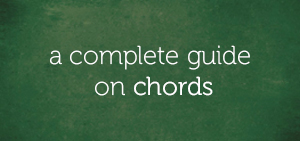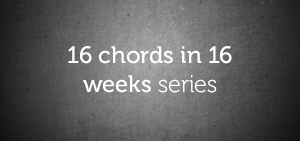In this lesson, we’re learning about the three classes of harmony that are used in chord formation.
If you turn on your radio this very minute and listen to any song at random, you will not fail to pick out one (if not all) of these elements…
- Harmony
- Melody
- Rhythm
…I bet you 17 nickels!.
Harmonization is the basic role of every pianist in a band. There are situations where the pianist is either required to be melodic or rhythmic, however, in absence of such situations, his role is to provide accompaniment.
In today’s lesson, you’ll be learning the basic principles of harmony that are used in chord formation. But before we delve into all that, let’s review the concept of harmony.
A Short Note On Harmony
The relationship between notes produces melody and harmony.
Melody is the relationship between notes (aka – “pitches“) that are heard separately, while harmony is the relationship between pitches that are heard together.
The relationship between notes that are heard at the same time produces harmony. However, it is important for you to note that when there’s a combination of notes, there are two outcomes of harmony:
- Concord
- Discord
Concord is a collection of agreeable notes played together while discord is an unpleasant or harsh collection of notes.
Although harmony is a product of the combination of two, three, four, or more notes, it’s important for you to know that the harmony between two notes is classified as an interval while the harmony between three or more notes is classified as a chord.
In the study of harmony, intervals are at the lowest level of harmony because they are basically formed from the relationship between two notes, while chords (consisting of three or more notes) belong to a higher class of harmony.
We cannot stick to our focus in today’s lesson without intervals, therefore, you’ll permit me to discuss intervals with you shortly.
“What Is An Interval?”
According to Jermaine Griggs “…an interval is a product of the relationship between two notes in terms of the distance between them.” He goes further by saying that ”
The relationship between two notes produces an interval, which is not considered as a chord, but as “…the building blocks of chords” (Jermaine Griggs).
One of the keywords in the definition of an interval is distance. Intervals have width and can be used to measure the distance (in pitch) between notes. The width of an interval depends on the number of tones (or letter names) it encompasses. An interval that encompasses one letter name, like C to C:
…is known as a first or unison.
An interval that encompass two letter names, like C to D:
…is called a second.
“Check Out The Rest…”
C to E:
…encompasses three letter names (C, D, and E):
…a third interval.
C-F:
…encompasses four letter names (C, D, E and F):
…a fourth interval.
C-G:
…encompasses five letter names (C, D, E, F and G):
…a fifth interval.
“In A Nutshell…”
Intervals are used to describe the distance between two notes, scales, chords, chord progressions etc.
Alright! To take you to the next level, let’s explore the classes of harmony.
Classes Of Harmony
In the formation of chords, class of harmony is one of the vital things to consider because it determines the intervallic structure of a chord.
Wait a minute! Let’s talk about the intervallic structure of a chord.
“What is the intervallic structure of a chord?”
The structure of a triad is determined by interval between successive notes. Taking a good look at the C major triad:
…reveals its intervallic structure of thirds. From C-E:
…is a third interval and from E-G:
…is another third interval.
It can either be said that the C major triad:
…has an intervallic structure of thirds or that the class of harmony between the notes of the C major triad:
…is thirds.
There are three different classes of harmony:
- Secundal
- Tertian
- Quartal
…and each class of harmony is unique and determines the intervallic structure of a chord. Let’s go ahead and explore these classes of harmony.
The Secundal Class Of Harmony
Secundal harmony is a product of the relationship between a collection of notes related by second intervals. In secundal harmony, the intervallic structure is based in second interval qualities like…
- The major second
- The minor second
- The augmented second [which are rarely used]
“Check Out A Few Examples Of Secundal Chords…”
C-D-E:
…Eb-F-G-A:
…D-E-F-G-A:
The secundal class of harmony produces chords that are referred to as clusters.
Attention: Cluster chords are formed by a collection of adjacent notes in any given scale and the secundal harmony is the class of harmony that exists between adjacent notes of all traditional scales.
Using the C major scale:
…we can form the following clusters…
G-A-B-C:
E-F-G:
C-D-E-F:
…from adjacent notes of the scale, in secundal harmony.
The Tertian Harmony Class Of Harmony
Tertian harmony is based on third intervals. Although there are four qualities of third intervals:
- Major third interval
- Minor third interval
- Diminished third interval
- Augmented third interval
…the major and minor third intervals are basically used in tertian harmony.
C major triad:
…constitute of two third intervals.
C-E:
…is a major third interval, while E-G:
…is a minor third interval.
Most of the chords that are commonly used in everyday average songs are tertian chords (formed by the relationship between third intervals) because the traditional principles of chord formation favors tertian harmony.
The Quartal Class Of Harmony
Quartal harmony is a class of harmony based on fourth intervals. Although there are three known fourth intervals:
- The perfect fourth
- The augmented fourth
- The diminished fourth
…the perfect fourth and augmented fourth (aka – “the tritone“) intervals are mostly used. Here are some examples…
In the quartal chord D-G-C:
…D-G:
…and G-C:
…are perfect fourth intervals.
In the quartal chord F-B-E:
…F-B:
…is an augmented fourth while B-E:
…is a perfect fourth interval.
In the quartal chord D-G#-C:
…D-G#:
…is an augmented fourth while G#-C:
…is a diminished fourth interval.
G#-C is a diminished fourth interval because it is smaller than G#-C#:
…a perfect fourth interval by a half step.
Quartal harmony is based on fourth intervals, which are bigger than the second and third intervals of the secundal and tertian classes of harmony. Consequently, quartal chords sound open and are commonly used in jazz from the 1960s till date.
Other Classes Of Harmony
The inversion of the three main classes of harmony we covered earlier, produces other classes of harmony.
In the inversion of intervals, when a second interval is inverted, it becomes a seventh interval. So, harmony in second intervals when inverted, produces harmony in sevenths.
For example, the secundal chord C-D-E:
…when inverted becomes E-D-C:
The interval between C:
…and D:
…is a seventh interval.
The interval between D:
…and E:
…is also a seventh interval. In a nutshell, C-D-E:
…(which is structured in second intervals) becomes E-D-C:
…(structured in seventh intervals) when inverted.
Another class of harmony can be formed by inverting the tertian harmony [in third intervals.]
When a tertian chord like the C major triad (C-E-G):
…is inverted, it becomes G-E-C:
…from C:
…to E:
…is a sixth interval.
From E:
…to G:
…is another sixth interval.
In a nutshell, C-E-G:
…(which is structured in third intervals) becomes G-E-C:
…(structured in sixth intervals.)
The quartal class of harmony can also be inverted. In the inversion of intervals, a fourth becomes a fifth when inverted. So, the inversion of quartal chords, produces quintal chords [chords that are built on intervals of fifths].
So a quartal chord like C-F-Bb:
…when inverted becomes Bb-F-C:
…from C:
…to F:
…is a fifth interval.
From F:
…to Bb:
…is another fifth interval.
Summarily, C-F-Bb:
…(which is structured in fourth intervals) becomes Bb-F-C:
…(structured in fifth intervals.)
Final Words
Now that we’ve covered classes of harmony, we’ll proceed into learning secundal, tertian, and quartal chords in another lesson and eventually explore how chords can be formed by the combination of more than one class of harmony.
I’ll see you then!
Chuku Onyemachi
Latest posts by Chuku Onyemachi (see all)
- The Formation Of Diminished Seventh Chords Used To Be Challenging Until I Did This
- How To Form Seventh Chords In Two Shakes Of A Dog’s Tail Using Third Intervals And The Circle Of Fifths Chart
- I Played The 13sus4 Chord And This Happened…
- How To Build Seventh Chords Like An Architect Using “Foundation And Structure” Concept
- This 4-Week Plan Will Help You Master All The Major Scales







Comments on this entry are closed.